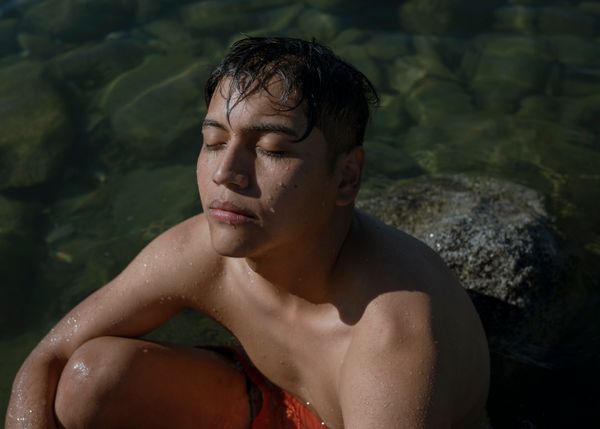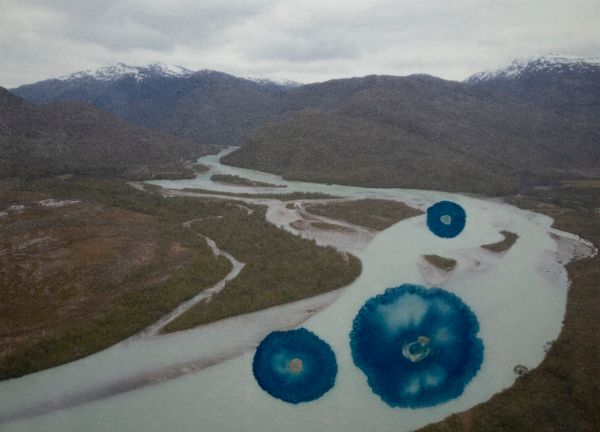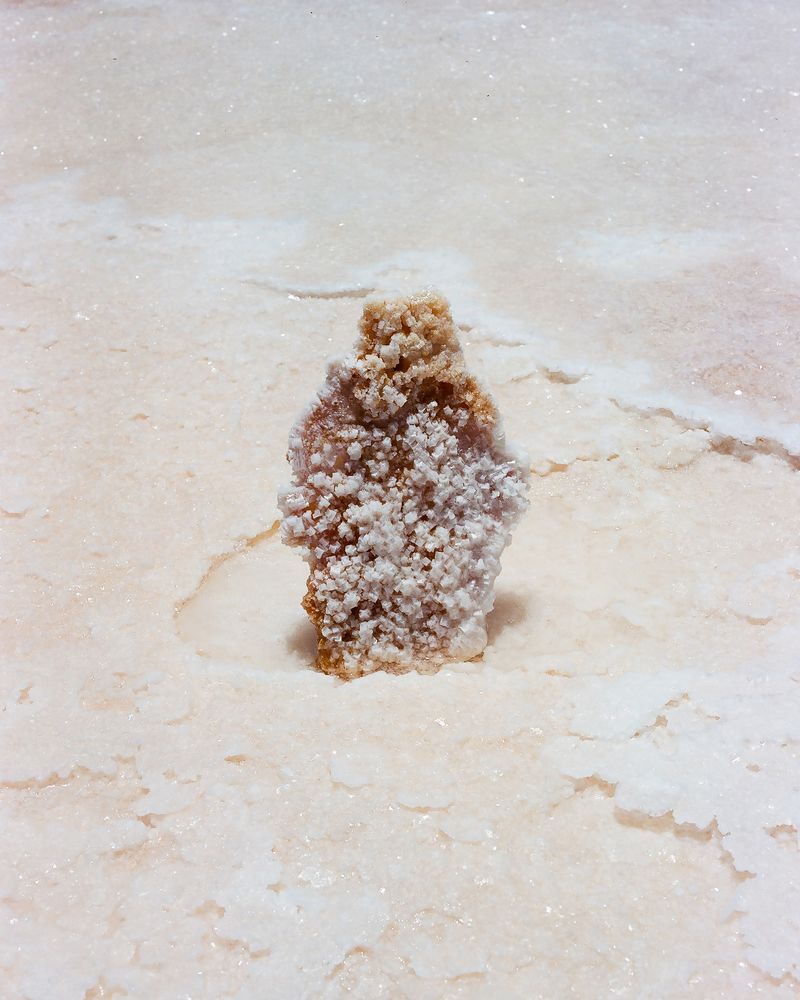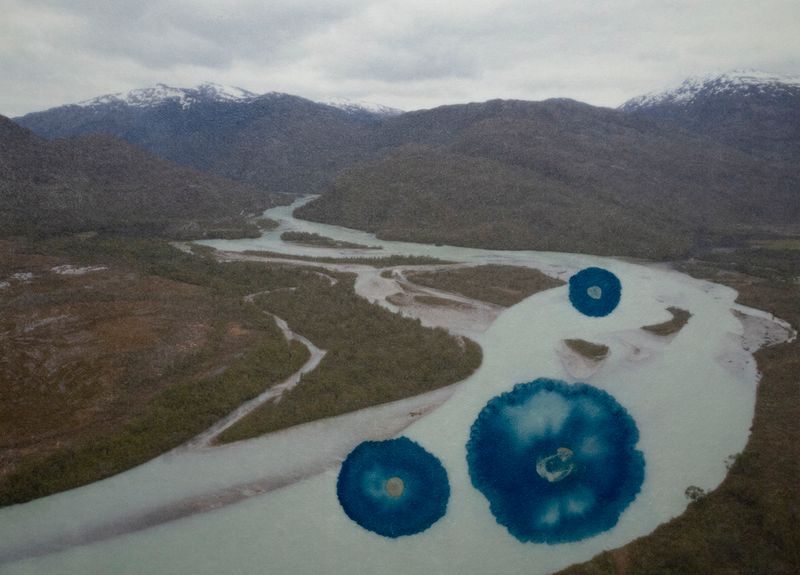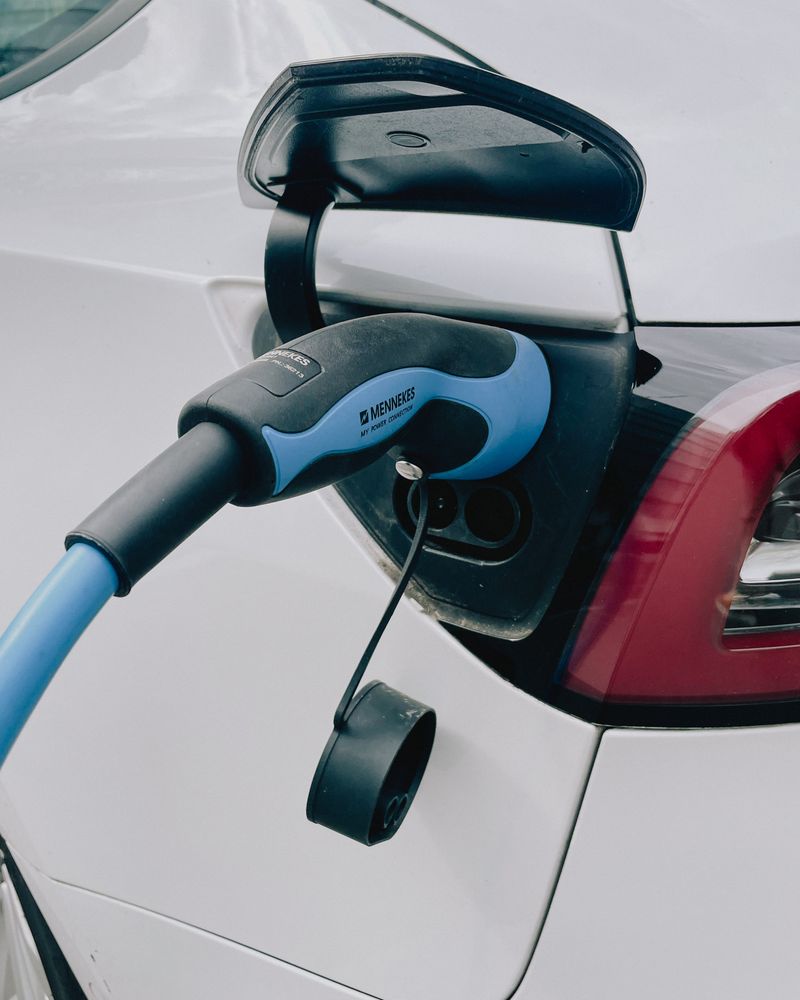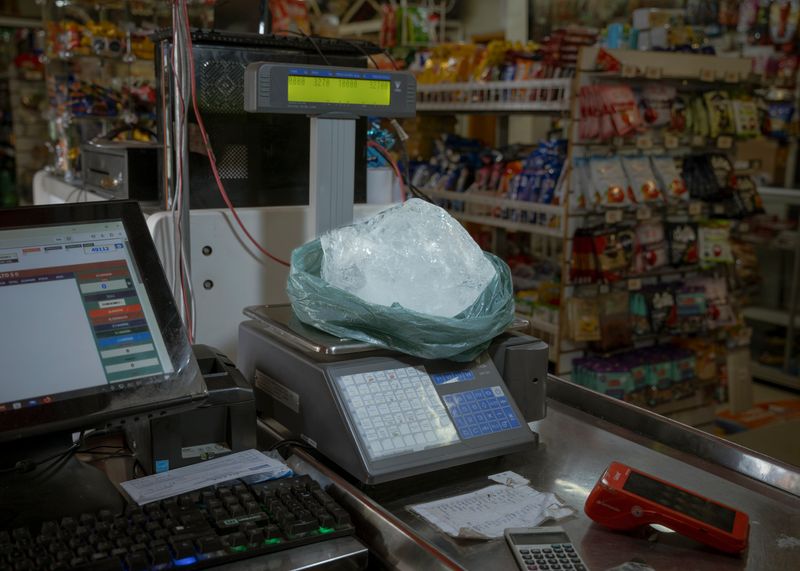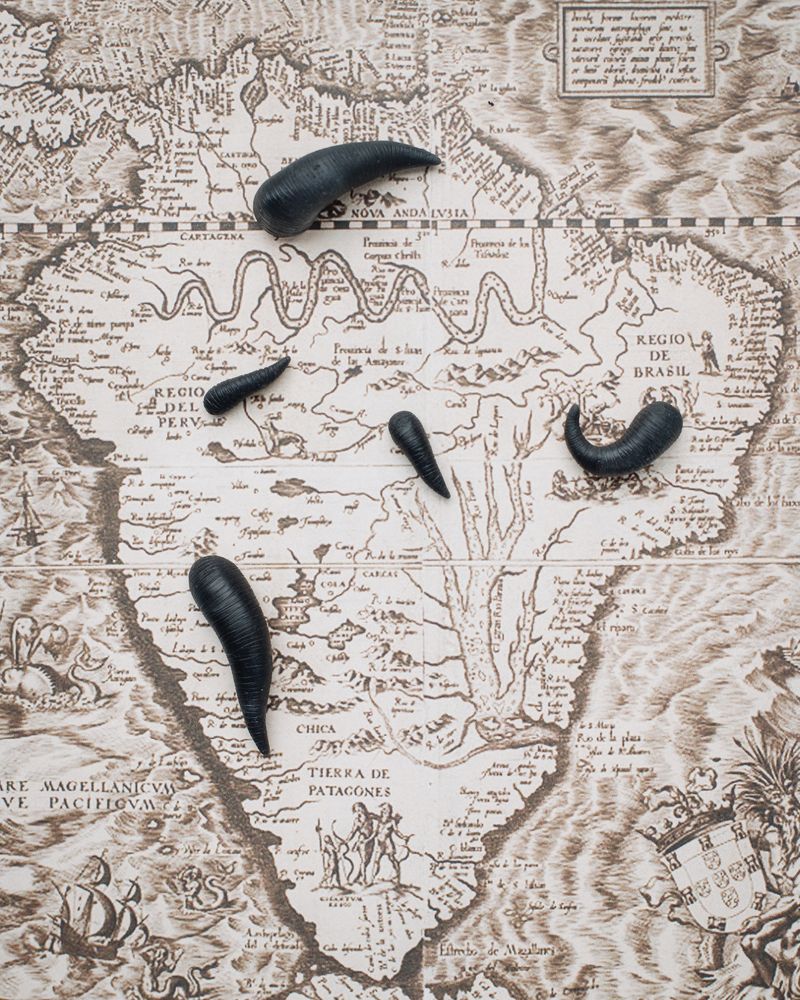Maximiliano Tineo, Sarah Schneider And Stella Meyer On Their Show Open Veins At PhMuseum Lab
-
Published25 Nov 2024
-
Author
Silver, lithium, and water are the raw materials at the center of Open Veins, an exhibition exploring the ongoing impact of colonialism and resource exploitation in Latin America.
Maximiliano Tineo’s El Rey Blanco starts from the South American legend of the Sierra de la Plata, a silver mountain believed to be located in the lands of the so-called Rey Blanco. Following the traces of this imaginary place, Tineo encounters two real locations: the silver mine of Cerro Rico de Potosí, Bolivia, and the Lithium Triangle, located between Argentina, Chile, and Bolivia. Sarah Schneider and Stella Meyer's Yo Bebo Leche Y Agua is unfolding from a village, Puerto Guadal in Chile, and a law that marked its existence: the Código de Aguas, enacted in 1973 by Pinochet, decreeing water privatization in Chile.
Developed during the 3rd edition of PhMuseum’s CRITICAE Masterclass led by Max Pinckers and Laura El-Tantawy, both works will be displayed at PhMuseum Lab, Bologna, from 5 December 2024 to 23 January 2025.
Ciao Maxi, Sarah and Stella. The exhibition delves deep into the open wounds of different Latin American territories. What is your connection to the geographical areas you portrayed?
Sarah and Stella: Our connection to South America goes back many generations, when our ancestors migrated to Argentina and Chile. To this day, part of Stella’s family lives in Santiago de Chile, which we visited in 2022. During our trip, we had the opportunity to explore many parts of the country and its incredible natural diversity. As hitchhikers, we met many Chileans along the way. With them, we not only shared Mate but also had in-depth conversations about water privatization in Chile. In Patagonia, we frequently came across graffiti with the message “Aguas Libres” (Free Waters). These messages, combined with our incomprehension regarding the privatization of such an essential resource, led us to spend more than a year in the Aysén region, where we conducted extensive research and ultimately realized our project.
Maximiliano: During the years 2021 and 2022, violent fires took place in the wetlands located in the southern part of the Paraná River, tributary of the Rio de la Plata and which borders Rosario, my hometown in Argentina. Triggered by groups linked to Asian interests by major financial contracts, with the aim of setting up industrial pig farms, the fires covered the region in ash and smoke, with no reaction from the government. As many of my my relatives and friends live in Rosario, the problem hit me particularly hard. At the time, I was already thinking about ideas for a photographic project linked to this river that is so dear to me and which has a very important role during the colonial era in the region.
As I delved deeper into the subject, the concepts of sovereignty, extractivism and the mechanisms of neo-colonialism came to the fore and emerged as themes I had to tackle.
How did you go about researching and planning this project?
Maximiliano: At the beginning of 2023 I set off in search of the source of the Paraná River with a friend, more than 2200 km north from Rosario. Thanks to books we shared, we discovered the fort of Sancti Spiritu, founded by Sebastian Gaboto, on the banks of the river. It was the first Spanish colonial settlement in what is now the Republic of Argentina. It was also at this point that I discovered the legend of the Sierra de la Plata and the myth of the White King. At the same time, new information about the lithium triangle was revealed and gained momentum. This refers to a region bounded by the salt deserts of Uyuni in Bolivia, Atacama in Chile and Hombre Muerto in Argentina. It contains over 65% of the world's reserves of lithium, now known as “white gold”. This metal is indispensable for making batteries for cell phones, computers and electric vehicles.
Thanks to its formal similarity, I started to connect two metallic triangles: the lithium triangle and the silver mountain, and it led me to compare two events separated by 500 years. On the one hand, there's the Spanish colonial exploitation of Cerro Rico de Potosí, in Bolivia, with the mountain that is said to be the origin of the Sierra de la Plata legend and perhaps the most important silver mine in human history. On the other hand, the current exploitation of lithium triangle which is attracting foreign interests and giving the region a crucial geopolitical role on a global scale. Today, the mechanisms of extractivism are fuelled by foreign interests such as China, Russia and the United States, motivated by the manna represented by these deposits.
After the first trip and months of research, two more trips came, one to Seville, in Spain, where we found the Colonial General Archive, and another back to South America, to Bolivia and Argentina, this time really focused on legends and places, with a much clearer idea of what I wanted to do and a notebook full of drawings and notes. Being my first ever documentary project, working on the field was really a challenge: looking for the spots, contacting people, trying to explain what I was doing, getting interviews, my camera breaking in Bolivia (hopefully I had backup!)... I really feel that I had to cross many barriers to make it happen.
Sarah and Stella: A journalist informed us about the situation in Puerto Guadal and helped us establish our first contacts in the village. There, the complex issue of water privatization can be broken down into a tangible example. Visualizing water privatization presented a challenge, as it is often abstract and largely invisible or hardly accessible in reality. In addition to collecting a huge body of different material, from archival footage, to objects, we conducted many interviews with experts and affected. We also researched the GPS data of water extraction points used by companies across various bodies of water in the Aysén region. At these locations, we captured photographs of the stunning and seemingly untouched landscapes. However, using our specially developed cyanotype technique—a process in which glacier water becomes the central element—we intentionally destroyed the beauty of these landscapes. The resulting stains act as watermarks, symbolizing human ownership.
What kind of impact do you hope Yo Bebo Leche Y Agua and El Rey Blanco will have on the audience?
Sarah and Stella: The primary goal of our work is to spread information through documentary photography. By translating abstract concepts into tangible images, we break through the barrier of legal jargon, making political content more accessible and understandable. This visual approach helps bridge the gap, particularly when addressing the otherwise highly theoretical topic of water policy. Our work aims to foster both political and artistic discourse on critical issues such as water privatization, water policy, and the importance of water as a vital resource in times of climate crisis. Additionally, we are committed to actively involving both local and international communities. To achieve this, we are currently working on a photobook for distribution in both Chile and Europe. Through public book presentations and cyanotype workshops, we seek to facilitate intercultural exchange on environmental issues and deepen the dialogue.
Maximiliano: I would like my work to help raise awareness and open channels of critical thinking. The message would be the same with which Eduardo Galeano ends his essay Open Veins of Latin America: “The international division of labor consists in the fact that there are countries that specialize in winning and others in losing. The region we know today as South America was precocious in its functions: it was dedicated to losing since the remote times when the Europeans of the Renaissance sank their fangs into its throat. Five hundred years have passed and South America has perfected its functions.”
You developed your work during CRITICAE 2023/2024, PhMuseum's online masterclass on documentary photography led by Laura El-Tantawy and Max Pinckers. How has this experience shaped your projects?
Maximiliano: CRITICAE was crucial to develop the project. Having the opportunity to be accompanied with feedbacks and having a place of permanent discussion and exchange with Laura and Max helped me to understand and apply tools that shaped the narrative and refined the message.
Sarah and Stella: At the start of the masterclass, we had so many ideas that we didn’t know where to begin. Laura and Max helped us develop a clear structure and find our own path in this work. Thanks to our studies in Visual Journalism and Documentary Photography at Hochschule Hannover, we come from a very specific background, which often involves a strict approach to our topics. Max, Laura, and the other participants showed us that documentary photography can be approached much more broadly—and that experimenting and having fun along the way should never be overlooked.
Sarah and Stella, you practice as an artistic duo. What is your workflow like?
Sarah and Stella: Two years ago, when we grew tired of the solitary “lone wolf" existence in photography, we decided to team up and tell stories together. We realized that by joining forces, we could push beyond our individual limits and achieve much greater things. For women, in particular, it can be challenging to assert themselves in the still largely male-dominated media landscape. What’s unique about our collaboration is that we share full authorship. Each of us photographs with our own camera, and at the end of the day, we simply throw all the images into one big pot and see what we’ve captured. Together, we then select the best images through mutual agreement. This approach allows us to set aside ego and relieve the pressure of having to do everything on our own. Most of the time, we travel together, brainstorm, and conduct interviews as a team. We split organizational tasks between us, making the process more balanced and collaborative.
Maxi, how did the legend of the Sierra de la Plata inspire your work, and how did you navigate between the mythical and the real?
Maximiliano: The legend of the Sierra de la Plata is sadly foundational for the region, a mythical place in the image of El Dorado that promised unimaginable quantities of precious metals. It is a legend that ended up being true. It was at the centre of perhaps one of the greatest robberies in history, and has led to the death of more than eight million people during the exploitation of the rich hill of Potosi. A metallic triangle at the origin of a plunder. The Sierra de la Plata was born as a myth, obsession and object of madness. At first, I wanted to play with this idea and I began by intervening in the image, as they intervened in the territories, transforming the horizon into a mirage: in images taken where the settlers sailed I was drawing with silver paint the elusive mountain they dreamed of, to go in search of something nebulous, impalpable and ungraspable.
The pictures drove me and I also imagined them, I always knew that I wanted to continue with a narrative that mixed the dreamy with the factual, so through archives, detailed shots, rites and Christs that only meet in syncretism, and devils that are not devils, the whole story was woven with oneiric tones.
How do you see the role of the artist in documenting and critiquing the world around them?
Sarah and Stella: As artists, we are part of a society, and with that comes a shared responsibility. It is our duty to engage with the issues that shape our world and confront the challenges they bring—such as water privatization. Storytelling is never entirely unbiased, which is why artists should approach their work with complete transparency. We must acknowledge that everyone brings their own perspective and opinions, and it is our responsibility to navigate this thoughtfully and ethically. Through our work, we aim to open up a discourse, using it as a starting point for a greater dialogue that encourages deeper reflection and collective action.
Maximiliano: I believe that the role of the artist is to bring voices and visibility to a problem that is particularly touching to her/him, to try to amplify it, spread it, try to raise awareness and push so that maybe at some point making some changes. Always working consciously and in favor of a positive change and inquiring about what is established.
Open Veins brings together two stories and different voices. How do you see El Rey Blanco and Yo Bebo Leche Y Agua engaging with each other in one exhibition?
Maximiliano, Sarah and Stella: Both projects address extractivism and the human drive to possess even natural elements. In addition to the geographical proximity, the colonial past of this region, and the in-depth research that connect the two projects, there is one key commonality: we aim to make the invisible visible. To do justice to the complexity of these topics and push beyond the boundaries of photography, we incorporate not only supplementary text elements and archival material but also deliberate, visible interventions in our photographs.
How do you feel about your work being displayed at PhMuseum Lab and to a new public? How have you experienced this process so far?
Sarah and Stella: We are very proud and excited about the opportunity to continue the discussion on the topic of water and bring it all the way to Italy. Our work, in its documentary execution, is an example of how art does not have to exist solely for the sake of art, but can be used as a medium to raise awareness of complex societal and political issues. Being part of the Open Veins exhibition at the PhMuseum Lab and receiving professional support from the PhMuseum team means not only appreciation and trust for us as emerging artists but also shows that we are being taken seriously as young female artists.
Maximiliano: I feel extremely happy to have the opportunity to see the project as part of Open Veins along with Sarah's and Stella's work, it's a great chance to share and spread this past-present-always story, keep the project evolving and open conversations with new publics and audience. The process was great, full of enthusiasm and really looking forward to seeing it happening. Thanks to the whole PhMuseum Team!
----------
Open Veins is on show at PhMuseum Lab, Via Paolo Fabbri 10/2a, Bologna, Italy, from 5 December 2024 to 23 January 2025.
Vernissage: 05 December 2024, 6pm-9pm
Opening Days: Every Thursday until 19 December, 5pm-7pm, afterwards by appointment
----------
Stella Meyer (b. 1997, Austria) and Sarah Schneider (b. 1996, Austria) currently reside in Hannover, Germany. Since 2020, they have been studying Visual Journalism and Documentary Photography at Hochschule Hannover. Together, they form a collective of documentary photographers who focus on socio-political issues, aiming to visualize the invisible. Their work has been published in newspapers such as the Frankfurter Allgemeine Zeitung and Der Spiegel Wissen, and they have been nominated for the True Picture and Student World Report Award. They were invited to the World Press Photo Exhibition in Oldenburg to talk about their work.
Maximiliano Tineo (b. 1988, Argentina) is an Argentinian visual artist based in Paris, France, and a member of the Paris Print Club. In recent years, he has used photography, text, and the independent publication of fanzines and photo-zines to explore themes of rootlessness, a sense of belonging, and the concept of home. His latest project on these themes, "hearth," has been selected as a finalist in several international competitions and festivals, and was the winner of the Boîte Book Award 2024. His work "El Rey Blanco" will be published by the French publishing house DUNES in July 2025.
----------
The PhMuseum Online Masterclasses aim to help participants advance their expertise and establish a solid, long-lasting creative practice. Each course is tailored to meet the needs of emerging photographers, artists, curators, and contemporary storytellers looking to bring their methods to the next level. Check out which program suits you best at phmuseum.com/education
